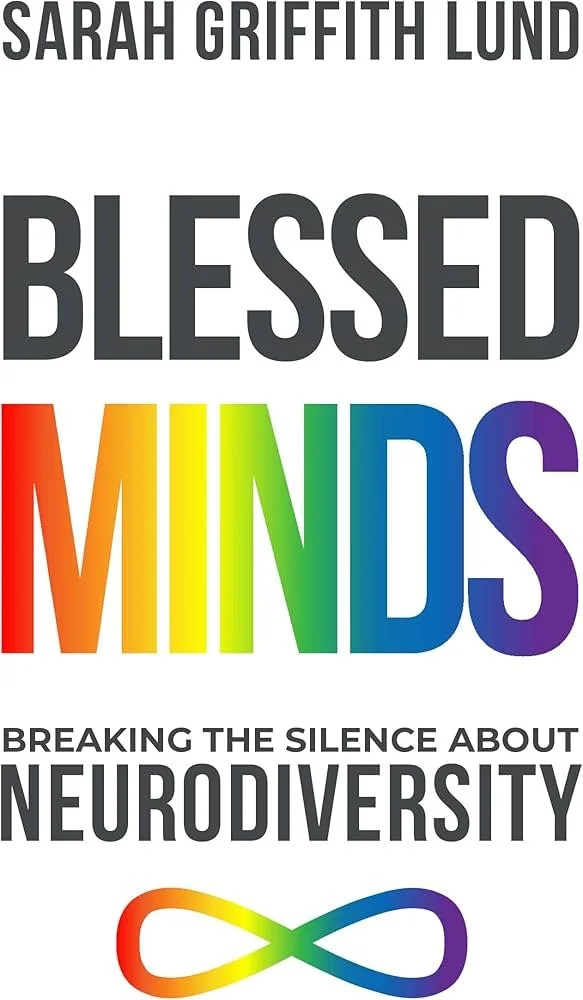Blessed Minds: Breaking the Silence about Neurodiversity
by Sarah Griffith Lund
ISBN: 9780827203440
Pub Date: March 24, 2025
Format: Paperback
Imprint: Chalice Press
Bio: Dr. Sarah Griffith Lund is an ordained minister and currently serves as senior pastor of First Congregational United Church of Christ of Indianapolis. Sarah serves on the National Staff of the United Church of Christ as the Minister for Disabilities and Mental Health Justice. She is the author of four books on mental illness, Blessed are the Crazy, Blessed Union, Blessed Youth, and the best selling, life-saving Blessed Youth Survival Guide. She blogs at sarahgriffithlund.com.
Synopsis
Blessed Minds introduces the topic of neurodiversity—a broad term which covers the variety of differences in brain function and behavior—into the context of ministry. Many terms are introduced throughout the book that will likely be new to most readers and, thankfully, Lund includes a glossary at the end of the book for easy reference.
The introduction and chapters 1 and 2 introduce the topic of neurodiversity to the reader. Three and four relate neurodiversity to the Bible and to the field of theology. Chapter five speaks to the importance of “Confronting Ableism and Stopping Stigma,” both of which need to be brought to the consciousness of most church members. Chapter six explores how the body of Christ is neurodiverse by design while chapter seven situates neurodiversity as another avenue of intersectionality. Chapter eight—as will be seen below—is the highlight of the book for me because it specifically instructs churches on ways to be more welcoming and meaningful for neurodiverse people. This is followed by chapter nine which champions “The Neurodivergent Minister,” and chapter ten which describes the “Neurospiritual Movement.” The book closes out with a benediction, an afterword, and useful appendices.
Highlights
Chapter eight, “The Neuroinclusive Church” is the highlight of this book for me because it instructs churches how to become neuroinclusive. It is very practical in its advice. And it supplies us with numerous examples to work from, such as a “Neurodiversity Themed Worship Service,” age specific guidelines to address the needs of neurodiverse members in all stages of life, as well as adaptations that can be made to the sanctuary to accommodate neurodiverse worshippers. She also describes resources that can be kept on hand for needs that may arise.
The other big highlight of chapter 8, for me, is that Rev. Lund also incorporates resources, advice, and templates for neurodiverse ministry from other churches around the country. Thus, this resource is more than just a report of what First Congregational United Church of Christ in Indianapolis has done, but also how their ministry has grown in conversation with other churches engaged in the same ministry.
Connections with Logotherapy
Viktor Frankl, the founder of Logotherapy and Existential Analysis, was a neurologist in Vienna during the 20th century. He was also a Jew. During the Nazi occupation of Austria, Frankl used his medical credentials to prevent the Nazis from executing people who today we might refer to as neurodiverse, until he too was sent to Auschwitz. The only camp survivor in his family, he spent the rest of his life affirming the unconditional value of all human lives. In On the Theory and Therapy of Mental Disorders: An Introduction to Logotherapy and Existential Analysis (2004), Frankl wrote: “Existential Analysis posits an uninjured spirit that is incapable of being injured” (p. 62). This human spirit is a dimension of the human different from the somatic (bodily) dimension and the psychiatric (mental) dimension.
For Frankl, problems of the body such as aging, sickness, etc., and problems of the mind such as schizophrenia, bi-polar disorder, etc., do not detract from the humanness of the person. Thus, he was opposed to reductionism, which he defined as limiting medicine/science to the physical or the mental. Logotherapy and Existential Analysis completes the picture to include the human spiritual dimension, as can be seen in Frankl’s statement regarding Joan of Arc in The Will to Meaning: Foundations and Applications of Logotherapy (2014):
There is no doubt that from the psychiatric point of view, the saint would have had to be diagnosed as a case of schizophrenia; and as long as we confine ourselves to the psychiatric frame of reference, John of Arc is “nothing but” a schizophrenic. What she is beyond a schizophrenic is not perceptible within the psychiatric dimension. As soon as we follow her into the noological dimension and observe her theological and historical importance, it turns out that John of Arc is more than a schizophrenic. The fact of her being a schizophrenic in the dimension of psychiatry does not in the least detract from her significance in other dimensions. And vice versa. Even if we took it for granted that she was a saint, this would not change the fact she was also a schizophrenic (p. 11).
Joan of Arc’s place in history is a given despite her apparent schizophrenia. In a reductionistic age, such as the one we live in now, what would have been her chances? Would the diagnosis of schizophrenia and the implicit ableism of our society prevent her from being able to lead her people to freedom?
Though I don’t think the word “ableism” can be found in any of Frankl’s writings, I believe he would have agreed with Lund’s statement on page 51: “Ableism creates a hierarchy of value and worth of human life based on perceived ability, with the most able-bodied at the top.” Certainly, a man who wrote that life has meaning under all circumstances, a man who survived three years in four Nazi concentration camps, and who wrote about the defiant power of the human spirit, would no doubt agree that neurodiverse individuals deserve a place in society and in worship.
Tom Edmondson for meaninginministry.com
Date Of Review: October 2025

